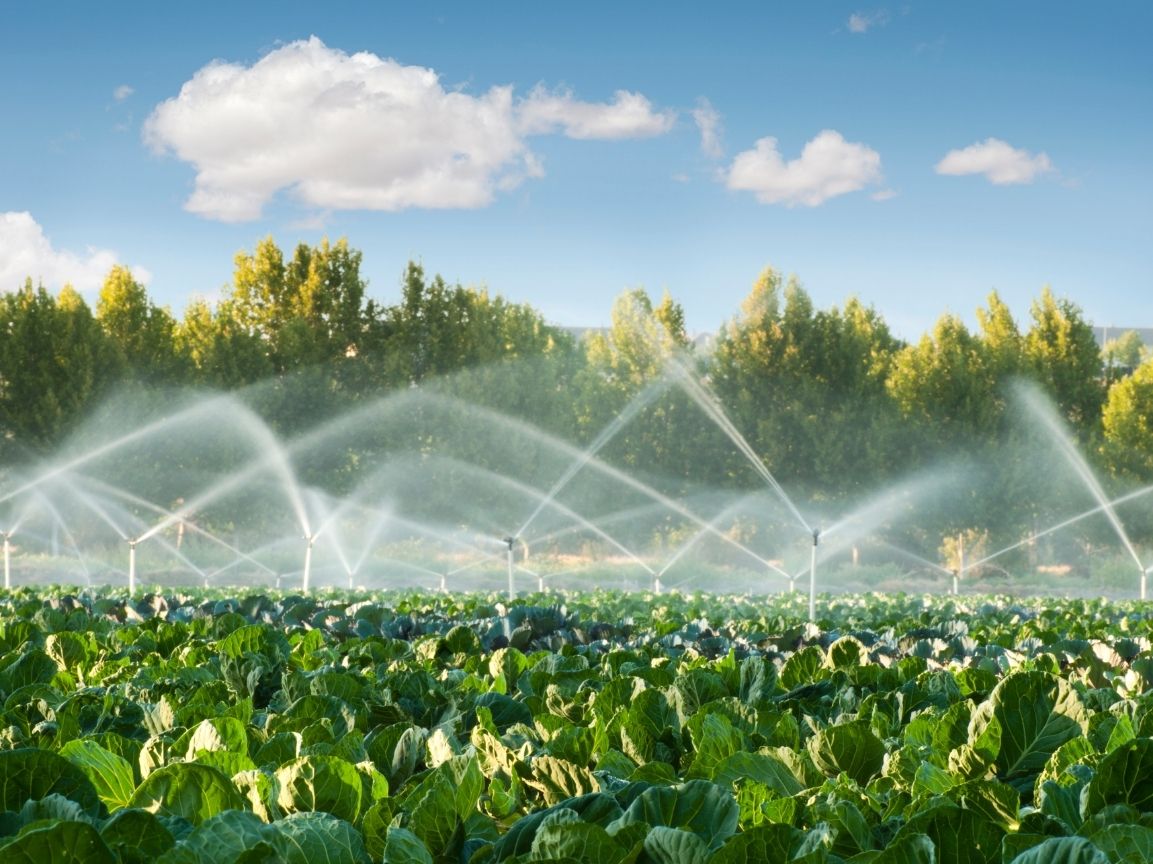Water is the lifeblood of agriculture. A well-designed water management system can make all the difference in ensuring that crops thrive and resources are used efficiently. Understanding the vital components of a water management system is essential for farmers looking to improve their agricultural success.
Introduction
A Water Management System encompasses the strategies and components used to collect, store, distribute, and manage water on farms. Effective water management is crucial for numerous reasons. It not only boosts crop yields but also ensures that water resources are used sustainably.
In agriculture, every drop counts. With increasing challenges such as water scarcity and climate change, farmers must prioritize efficient water use. A robust water management system enables farmers to adapt to these challenges. It maximizes the benefits from their water resources, driving both productivity and profitability.
The connection between water management and sustainability cannot be overstated. By adopting best practices, farmers can improve water quality and contribute to long-term environmental health. Ultimately, implementing a successful water management system is about securing a brighter future for agriculture. Proper management allows farmers to grow crops more efficiently while conserving precious water resources, paving the way for a sustainable agricultural model.
In summary, understanding the components of a water management system is the first step toward attaining agricultural success. As we delve into the key components, keep in mind the vital role water plays in farming.
Importance of Water Management in Agriculture
Water management plays a crucial role in farming. Good water management not only boosts productivity but also enhances profitability. With a well-structured system in place, farmers can use water resources more efficiently, ensuring crops receive the right amount at the right time.
The Necessity of Effective Water Management
In today’s world, farmers face increasing challenges from water scarcity and climate change. Droughts and unpredictable weather patterns can devastate crops, leading to lower yields and financial losses. By implementing effective water management practices, farmers can mitigate these risks. They can better adapt to changing conditions and protect their investments.
Proper water management contributes to sustainability as well. Using water efficiently reduces waste and lowers costs. Furthermore, it helps maintain soil health and biodiversity. Healthy water management practices ensure that farmers meet their needs without compromising future generations’ ability to farm.
Sustainable Agricultural Practices
Sustainable farming relies heavily on strong water management systems. When farmers implement strategies like rainwater harvesting and efficient irrigation, they reduce their environmental footprint. These practices not only conserve water but also protect local ecosystems.
Investing in water management leads to long-term benefits. Farms that prioritize these systems often experience enhanced soil health and crop resilience. This translates to higher profit margins over time.
Additionally, smart water practices encourage community involvement. Farmers can collaborate to share resources, reducing individual costs and improving collective sustainability.
In summary, effective water management is essential for productivity and profitability in agriculture. By addressing water scarcity and climate challenges head-on, farmers can ensure their success while promoting sustainable practices for future generations.
Component 1: Water Sources
Water sources are crucial to any effective water management system for farms. Knowing where your water comes from helps you plan better and ensure that resources last. The main types of water sources include surface water, groundwater, and rainwater harvesting.
Types of Water Sources
Surface Water
Surface water is readily accessible because it includes rivers, lakes, and ponds. It’s usually abundant but comes with challenges, such as seasonal fluctuations and contamination risks. Farmers should evaluate the proximity of surface water to their fields and assess its quality before relying on it for irrigation.
Groundwater
Groundwater is another vital source. Wells tap into underground aquifers, providing a steady supply year-round. However, it’s essential to monitor levels and ensure sustainable use. Over-extraction can deplete these resources, causing long-term problems for both the farm and the surrounding ecosystems.
Rainwater Harvesting
Rainwater harvesting is increasingly popular as climate patterns change. This method collects rainwater from rooftops or other surfaces for irrigation. It’s a sustainable option that reduces reliance on other sources. Installing rainwater collection systems can significantly cut water costs and ensure a reliable supply during dry periods.
Assessing Water Quality and Availability
Once you’ve identified potential water sources, evaluating their quality and availability becomes crucial. Testing for contaminants, salinity, and pH levels guarantees that your crops receive clean and suitable water. Regular monitoring can help you detect problems early and adjust your management practices accordingly.
Also, think about the seasonal availability of these sources. Some may only provide water during specific times of the year. Knowing when and how much water you can draw from each source will enhance your planning and crop selection.
A robust understanding of water sources can streamline your water management efforts. It also highlights the importance of diversifying your water supply. By blending different sources, you can mitigate risks and make your farm more resilient. Thus, focus on leveraging available water sources wisely to boost productivity and sustainability.
Component 2: Infrastructure
Infrastructure is the backbone of any successful water management system on a farm. Without it, water delivery becomes inefficient, causing waste and unnecessary expenditures. Understanding different types of irrigation systems is crucial for maximizing water use.
Irrigation Systems
Drip Irrigation
Drip irrigation is a highly efficient system that delivers water directly to the plant roots. This method minimizes evaporation and runoff. Consequently, it aids in water conservation. Drip systems are also ideal for crops that require precise watering. They can be a bit more costly to install, but the long-term savings on water bills make them worthwhile.
Sprinkler Systems
Sprinkler systems are another popular choice among farmers. They simulate rainfall by distributing water in a spray pattern. This system is versatile and can cover large areas effectively. Additionally, it is easier to adjust according to the crop’s needs. Regular maintenance ensures that the sprinkler heads are clean and functioning properly, eliminating clogs that could reduce efficiency.
Flood Irrigation
Flood irrigation, though an older technique, still plays a significant role in some farming practices. This method involves flooding the entire field with water. While it can be effective for specific crops, flood irrigation often leads to higher water consumption. Farmers must evaluate their crop types and the local climate when considering this method.
Importance of Agricultural Infrastructure
Beyond irrigation systems, overall agricultural infrastructure plays a pivotal role in water management. Properly designed channels and pipes ensure that water travels efficiently from the source to the crops. Moreover, maintaining these systems is crucial for long-term usability. Regular inspections can identify leaks or blockages, which can waste substantial amounts of water.
Investing in infrastructure not only promotes efficient water use but also supports crop health and yields. Farmers who prioritize robust infrastructure find they can adapt to changing conditions more easily. In summary, picking the right irrigation system and taking care of agricultural infrastructure is key to a successful water management strategy. It ensures crops receive the right amount of water while minimizing waste. This commitment ultimately leads to better yields and sustainable farming practices.
Component 3: Storage Systems
Water storage is a critical aspect of any successful water management system for farms. Without adequate storage solutions, all other efforts can go to waste. Efficient storage helps ensure that water is available when crops need it most. Let’s explore the various types of storage systems and their importance.
Types of Storage
Tanks
Water tanks are an essential part of a farm’s water management strategy. They can be made from materials like plastic, fiberglass, or metal. Each has its strengths. For instance, plastic tanks are lightweight and resist corrosion. Metal tanks, however, can be more durable in extreme weather conditions. Choosing the right tank depends on factors such as the farm’s location, budget, and specific needs.
Reservoirs
Reservoirs are larger, often artificial lakes designed to store excess water. They offer several benefits, including:
- Capacity: Reservoirs can hold significant amounts of water, suitable for larger farming operations.
- Sustainability: They help manage runoff and seasonal variations in water supply.
Building a reservoir requires careful site selection and design. Properly constructed, reservoirs can provide a reliable source of water over time.
Ponds
Ponds serve a dual purpose. They can act as storage for irrigation while also providing habitats for wildlife. Moreover, ponds collect rainwater and runoff, ensuring that valuable water isn’t wasted. To maximize efficiency, ponds should be designed with considerations for evaporation and sediment buildup.
Importance of Adequate Storage Solutions
Effective water storage systems prevent waste and ensure that farmers have access to water during dry spells. Here are a few key benefits:
- Water Conservation: By storing water when it’s plentiful, farmers can reduce reliance on external sources during droughts.
- Cost Efficiency: Having a storage system minimizes the need for immediate large-scale water extraction, saving on transportation and treatment costs.
- Crop Health: Keeping a consistent water supply reduces stress on crops, promoting healthy growth and optimal yields.
In conclusion, investing in efficient water storage systems is essential for modern farming. They not only enhance water conservation but also support sustainable agricultural practices. As climate change continues to challenge traditional farming methods, robust storage solutions will play an even more crucial role in ensuring farm productivity. By focusing on water storage, farmers can better respond to changing conditions and secure their agricultural future.
Component 4: Distribution Systems
Effective water distribution is crucial for maximizing agricultural productivity. It ensures that every plant receives the right amount of water. A well-designed system minimizes waste and maximizes efficiency. Let’s look at key elements that contribute to a successful distribution system.
Piping and Channels
Design Principles for Effective Distribution
Start by planning your layout thoughtfully. The design of your piping and channels will impact water flow and distribution. Consider the following:
Gravity vs. Pressure Systems: Decide whether to use a gravity-fed system or a pressurized one based on your field’s topography. Gravity systems are simpler and cheaper but might not work for all types of terrain.
Pipe Sizing: Use the right diameter of pipes to prevent water loss. Oversized pipes can lead to inefficient water delivery while undersized pipes may create blockages and reduce flow rate.
Slope and Elevation: Ensure correct slopes for channels to enable smooth water flow. This reduces stagnant water that could lead to disease or pest issues.
- Accessibility: Make sure your distribution system is easy to access for maintenance. Regular cleaning and inspection keep the system running optimally.
Maintenance Tips
Regular maintenance keeps your distribution system effective. Here are some practical tips:
Inspect for Leaks: Periodically check pipes and channels for leaks. Even small leaks can waste significant amounts of water over time.
Clear Debris: Remove any buildup inside pipes and channels. Sediment can create blockages, leading to uneven water distribution.
Monitor Flow Rate: Use flow meters to track how much water is being delivered. This can help you identify any issues quickly.
- Seasonal Checks: Before planting seasons, assess your distribution system. Ensure it’s ready for the increased demand during critical growth periods.
Incorporating these principles and maintenance practices into your distribution system ensures that your crops receive precise water management. This approach not only conserves water but also enhances overall farm productivity and sustainability.
By focusing on efficient distribution systems, farmers can play an integral role in managing their water resources effectively. This leads to healthier crops and more robust harvests, ultimately contributing to a sustainable agricultural future.
Component 5: Monitoring and Control Systems
Effective water management hinges on the ability to monitor and control resources in real time. Without reliable data, farmers may struggle to optimize their water usage, leading to inefficiencies and wasted resources. Here’s a closer look at the technological solutions available for monitoring and controlling water usage on farms.
Technological Solutions
Smart Irrigation Controllers
These controllers adjust watering schedules based on weather data or soil moisture levels. They reduce water waste by ensuring crops receive only what they need. Smart controllers can be programmed remotely and integrate with smartphones or computers. This flexibility allows farmers to adapt their strategies quickly as conditions change.
Moisture Sensors
Moisture sensors provide direct feedback about soil conditions. By installing these devices, farmers can measure moisture levels at different soil depths. This information helps determine when to irrigate, ensuring that crops have the right amount of water at the right time. Thus, moisture sensors minimize overwatering and enhance crop health.
Data Management Tools
Data management tools collect and analyze various data points related to water usage and crop needs. By integrating data from sensors and controllers, farmers can gain valuable insights into their irrigation strategies. This enables them to identify patterns, forecast needs, and make informed decisions. With the right data management tools, farmers can significantly boost efficiency and productivity.
Importance of Monitoring Systems
Monitoring systems play a crucial role in sustainable farming. By keeping a close eye on water usage and crop requirements, farmers can reduce waste and conserve precious resources. Moreover, these systems support better decision-making, which leads to healthier crops and improved yields.
In conclusion, investing in monitoring and control systems is key for any farmer aiming to enhance their water management strategy. Utilizing smart technology not only conserves water but also contributes to a more sustainable farming practice. Make these tools a central part of your water management system, and watch your agricultural success grow.
Component 6: Soil Management
Soil management plays a crucial role in effective water management for farms. Healthy soil promotes better water retention and supports robust crops. Here, we will explore the connection between soil health and water management practices.
The Relationship Between Soil Health and Water Retention
Healthy soil acts like a sponge, absorbing and retaining water. When soil is rich in organic matter and well-aerated, it holds moisture for longer periods. This helps reduce the need for frequent irrigation. Conversely, compacted or poorly structured soil struggles to absorb water, leading to runoff and dry patches in crops.
Improving Soil Structure
Enhancing soil structure is essential for increasing water absorption. Here are some techniques to enhance soil health and structure:
- Add Organic Matter: Compost or well-rotted manure enriches the soil. It improves both water retention and nutrient availability.
- Practice Crop Rotation: Switching crops annually helps maintain nutrient balance and prevents soil degradation. Each crop type affects the soil differently, promoting overall soil health.
- Implement Cover Cropping: Cover crops, like clover or rye, prevent soil erosion. They also improve soil structure and enhance water infiltration.
By nurturing the soil, farmers can maximize their water resources while improving crop yield.
Techniques for Enhancing Water Absorption
Now that we understand the importance of soil health let’s look at specific practices that enhance water absorption:
- Tillage Management: Reduce tillage practices to preserve soil structure. Minimum or no-till approaches maintain soil integrity and prevent compaction.
- Mulching: Applying organic mulch around plants helps retain moisture. It reduces evaporation and prevents weed growth, allowing plants to take full advantage of available water.
Adopting these practices can significantly enhance the effectiveness of water management systems on farms.
Component 7: Water Quality Management
Water quality is vital for successful farming. Contaminated water can harm crops and affect yields. Therefore, testing and treatment of water should be a priority for every farmer. Let’s break down the key aspects of managing water quality effectively.
Testing Water Quality
Regular water quality testing should be part of your routine. This testing helps identify parameters like pH, salinity, and the presence of harmful pathogens. You can use simple at-home testing kits or hire professionals for accurate results. Aim to test your water at least twice a year, especially before planting seasons.
Signs of Poor Water Quality
Look for indicators of water quality issues. Unusual algae growth, foul smells, or discoloration can signal potential problems. Poor water quality can lead to crop diseases or low productivity. Don’t ignore these signs; act promptly.
Treatment Methods
Once you identify issues, implementing effective treatment methods is crucial. Here are some popular options:
Filtration Systems
Filtration can remove sediment, bacteria, and contaminants. Options include sand filters, activated carbon filters, and membrane filtration. Choose based on your water’s specific needs.
Chemical Treatments
Chemical treatments can address specific contaminants. Chlorination can disinfect water, while flocculants help remove suspended particles. Balance is key; excessive chemicals can harm crops.
Natural Solutions
Consider eco-friendly methods, too. Biofilters utilize plant roots and microorganisms to purify water. This green approach can be effective and cost-efficient while reducing chemical use.
Maintaining Water Quality
Ensuring consistent upkeep of water quality is essential. Regularly check your storage systems—tanks, reservoirs, or ponds—for any signs of contamination. Keep them clean and shielded from runoff or debris. This proactive approach aids in maintaining high-quality water for all farming needs.
Component 8: Education and Training
A successful water management system starts with well-informed farmers. Education and training play pivotal roles in ensuring that agricultural practices are effective and sustainable. Farmers need ongoing access to the latest water management techniques and technologies.
Importance of Ongoing Education
Water management practices evolve over time. New research and technology emerge regularly, offering better ways to conserve resources. Farmers who stay updated are more likely to implement successful methods. This leads to optimized water usage and improved crop yields.
Moreover, understanding the local environment is crucial. Knowledge about the specific water needs of different crops allows for targeted irrigation strategies. Proper training helps farmers customize their systems to match their unique conditions.
Resources for Training
There are many resources available for farmers seeking education in water management. Agricultural extensions, universities, and local organizations often provide workshops and courses. Online platforms also offer a wealth of information. Websites like the USDA’s extension services feature a variety of materials on water conservation practices.
Farmers can also explore community programs designed to share best practices. Networking with other farmers fosters a culture of knowledge exchange. It allows for firsthand insights into successful techniques and challenges.
Best Practices for Continuous Learning
Farmers should approach education as a lifelong process. Regularly attending workshops or seminars can enhance their knowledge base. Subscribing to agricultural journals or newsletters keeps them informed about the latest trends and studies.
Adopting a mentorship approach can also significantly benefit farmers. Pairing experienced farmers with newcomers encourages knowledge transfer. This relationship can help new farmers avoid common mistakes when implementing water management systems.
In conclusion, farmer education and training are vital for the success of water management systems. Investing in ongoing learning can lead to efficient resource use and sustainable farming practices. By staying informed, farmers can tackle the challenges of modern agriculture and thrive in a changing environment.
Case Studies of Successful Water Management Practices
Successful water management is crucial for sustainable farming. Below are standout examples of farms and regions that have effectively implemented innovative water management strategies.
Region: California’s Central Valley
California’s Central Valley is a hub of agriculture. However, it also faces significant water scarcity challenges. Farmers in this region have adapted by embracing advanced irrigation techniques.
Adaptations in California’s Central Valley
- Drip Irrigation: Many farmers have switched to drip irrigation systems. This method significantly reduces water waste while improving crop yields.
- Surface Water Management: Enhanced management of surface water and better storage practices have resulted in noteworthy productivity increases.
Key Takeaways
- Technological Adoption: Farmers utilized moisture sensors to monitor soil conditions.
- Water Use Efficiency: The move to drip irrigation led to a 20-30% reduction in water use.
Case Study: A Midwestern Corn Farm
In the Midwest, a corn farm implemented a comprehensive water management system incorporating rainwater harvesting.
Implementation and Benefits
- Pond Construction: The farm built ponds to capture runoff during heavy rains.
- Irrigation Supply: This stored water supports irrigation throughout the dry summer months.
As a result, the farm experienced:
- Increased yields.
- Improved soil health due to better moisture retention.
Key Takeaways
- Rainwater Harvesting: This system significantly reduced dependency on external water sources.
- Soil Quality: The practice increased organic matter, promoting a healthier ecosystem.
Case Study: Organic Vegetable Farm in Australia
An organic vegetable farm in Australia has integrated technology into its water management practices.
High-Tech Solutions
- Smart Irrigation Controllers: These devices automate watering based on weather data and soil moisture levels.
This technological approach:
- Conserves water.
- Ensures crops receive optimal watering at the right time.
Key Takeaways
- Smart Technology: Implementation of data-driven irrigation reduced water usage by 40%.
- Overall Sustainability: This approach improved crop resilience, allowing the farm to adapt to climate variability.
Challenges and Considerations
Implementing an effective water management system on farms is not without its challenges. Understanding these obstacles allows farmers to devise better strategies for overcoming them. Here are some common roadblocks they face.
Regulatory Factors
Farmers often contend with various regulations regarding water use. These rules can vary greatly by region and may include:
- Restrictions on groundwater extraction
- Limits on surface water usage
Understanding local laws is crucial. Farmers must stay informed about their rights and obligations to avoid potential penalties.
Financial Investment
Upgrading or installing a new water management system requires significant financial investment. This can pose a barrier, especially for smaller farms with limited budgets. To mitigate these costs, farmers can explore:
- Grants
- Subsidies
- Low-interest loans
These financial assistance options can make it feasible to invest in vital infrastructure.
Environmental Concerns
Farmers must also consider the environmental impact of their water management practices. Over-extraction of water can lead to:
- Habitat degradation
- Lower water quality
It’s essential to adopt sustainable practices that protect local ecosystems while ensuring agricultural productivity. Implementing efficient systems helps strike a balance between necessity and sustainability.
Technology Access
While technology can improve water management, not all farmers have equal access to it. Cutting-edge tools, like smart irrigation systems, can be cost-prohibitive. Additionally:
- Farmers in remote areas may struggle with internet connectivity,
- This limitation can hinder their ability to use data management tools.
Therefore, finding affordable technology solutions is key for farmers looking to enhance their systems.
Climate Variability
Lastly, climate change introduces unpredictability in water availability. Increasing droughts or heavy rainfall can disrupt traditional farming practices. As such, farmers must:
- Remain adaptable
- Develop contingency plans
Diversifying water sources and improving soil health can bolster resilience against fluctuating climate conditions.
Future of Water Management in Agriculture
Water management in agriculture is evolving rapidly. Farmers are facing new challenges and opportunities shaped by climate change and technological advances. By understanding current trends and innovations, farmers can better prepare for a sustainable future.
Emerging Technologies
One of the leading trends is the integration of technology into water management systems. Smart irrigation systems, for instance, use sensors to optimize water usage. These systems track moisture levels and adjust flow rates accordingly. As a result, they enhance efficiency and reduce waste. Additionally, drone technology is making waves in monitoring crop health and soil moisture. These tools provide data that helps farmers make informed decisions on irrigation.
Sustainable Practices
Sustainability is no longer optional; it’s essential. Farmers are increasingly adopting practices that promote water conservation. Techniques such as rainwater harvesting are gaining traction. By capturing and storing rainwater, farmers can reduce dependency on groundwater. Crop rotation and cover cropping also help maintain soil health. Healthy soil retains water better and promotes sustainable yields. Together, these practices mitigate the impacts of water scarcity.
Policy and Regulation
With innovation comes the need for supportive policies. Governments worldwide are beginning to recognize the importance of water management in agriculture. Regulations that encourage sustainable practices not only benefit the environment but can also provide financial incentives for farmers. Grants and subsidies for adopting water-efficient technologies can ease initial costs. Collaborative efforts between farmers and policymakers will pave the way for comprehensive water management strategies.
Climate Resilience
As weather patterns become more unpredictable, resilience is key. Farmers must anticipate changes and adapt their water management strategies accordingly. This may involve diversifying water sources or investing in infrastructure that can withstand extreme weather events. Planning for droughts and floods ensures that farms remain productive and profitable, even in challenging conditions.
Conclusion
In summary, understanding and implementing the key components of a successful water management system is vital for every farmer. By focusing on water sources, infrastructure, storage systems, distribution systems, monitoring and control systems, soil management, water quality management, and education, you can enhance your farm’s efficiency and sustainability.
Farmers who prioritize these elements will see improved productivity and resource conservation. It’s crucial not to overlook the effects of water management on your yields. As climate challenges grow, effective water practices become more critical.
Investing time and resources into water management will pay off in the long run. Embrace the tools and strategies outlined in this article to foster a more sustainable agricultural practice. Every small step can create significant change, driving productivity while protecting our precious water resources.







